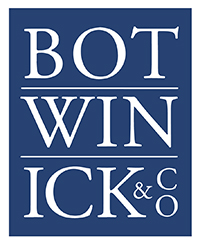According to the U.S. Census Bureau, nearly 447,000 new business applications were filed in May 2025 alone—a strong signal that entrepreneurial spirit in America remains vibrant. If you’re among the growing number of startup founders, it’s important to understand how your early-stage expenses impact your tax situation. The way you manage your startup costs can significantly influence your first-year federal tax liability.
At Botwinick & Co., we work closely with startups and emerging businesses to ensure they make the smartest financial decisions from day one. Here’s what you need to know before filing your taxes.
How Are Startup Costs Treated for Tax Purposes?
If you’re launching a business or in the planning stages, there are three important tax rules to understand:
-
What qualifies as a startup cost?
Startup costs include expenses incurred during the investigation or creation of a business, before it officially begins operations. -
How much can you deduct?
The IRS allows you to deduct up to $5,000 in startup costs and $5,000 in organizational costs in the year your business becomes active. However, this deduction phases out if total costs exceed $50,000. Any remaining costs must be amortized evenly over 180 months (15 years). -
When can you claim deductions?
You can’t deduct or amortize these costs until your business is considered “actively conducting business.” This typically means your business is officially operating and generating revenue. The IRS will look at your activity, intent to earn a profit, and involvement to determine eligibility.
Which Expenses Qualify?
To qualify for the limited deduction, startup costs must be:
-
Directly related to the creation or acquisition of a business.
-
Incurred before operations begin, and would otherwise be deductible if the business was already active.
Examples include:
-
Market research for new products or services
-
Travel expenses to meet with potential suppliers or customers
-
Advertising and promotional materials
-
Business consulting and feasibility studies
Organizational expenses are specifically related to setting up a business structure such as a corporation or partnership. These might include:
-
Legal fees for drafting incorporation documents
-
Accounting services for financial setup
-
State filing fees for registering your entity
Why It Matters
The early financial decisions you make as a startup can have long-term tax implications. Properly classifying and tracking your expenses ensures you don’t miss out on valuable deductions.
Get Ahead with Strategic Planning
Launching a business is exciting—but navigating tax regulations can be overwhelming without the right guidance. At Botwinick & Co., we help startups across all industries build a strong financial foundation. From tax planning to financial structuring, our expert CPAs are ready to guide you through each stage of your entrepreneurial journey.
📞 Schedule a consultation today to discuss your business goals and how we can help optimize your tax strategy from the very beginning.

